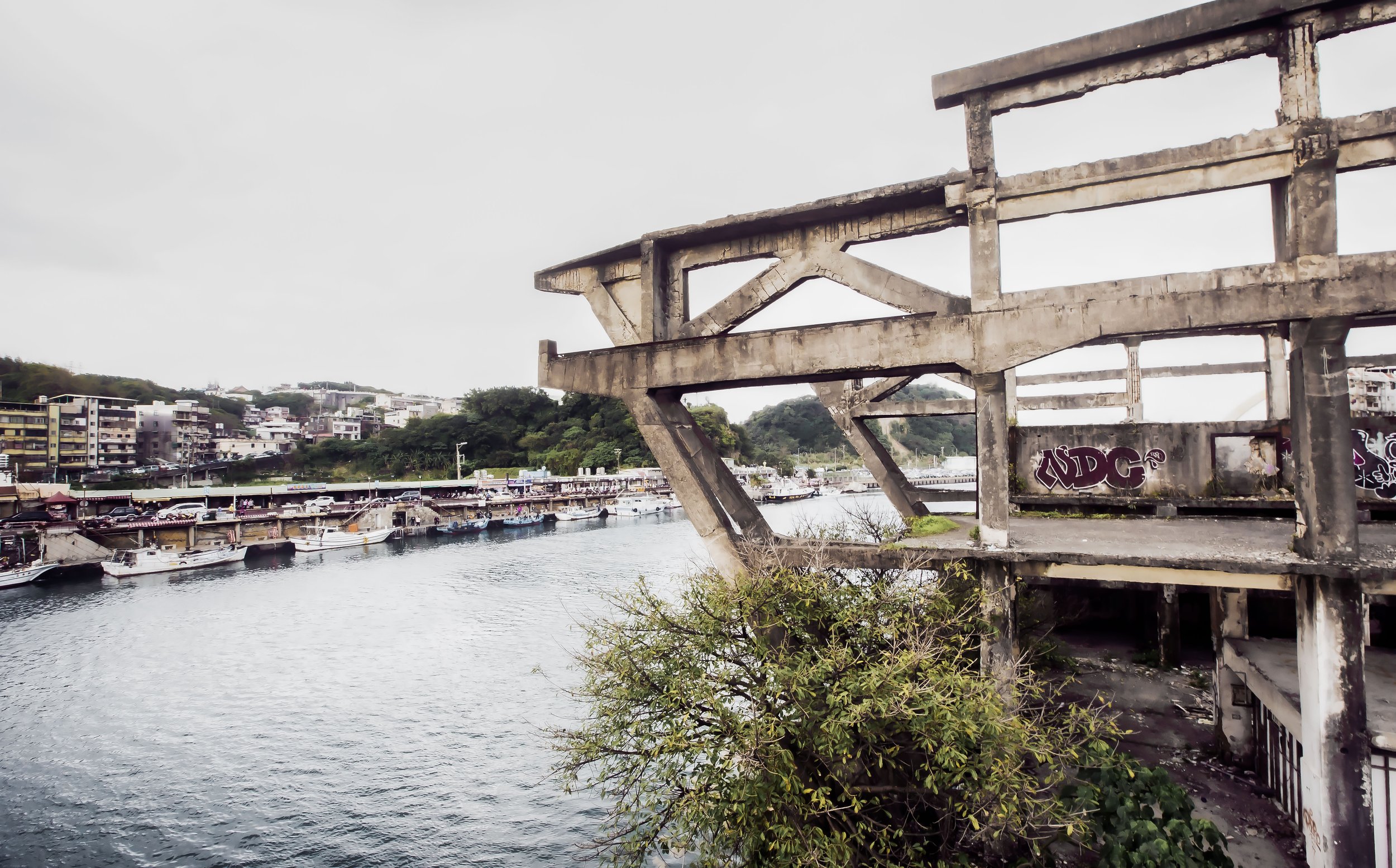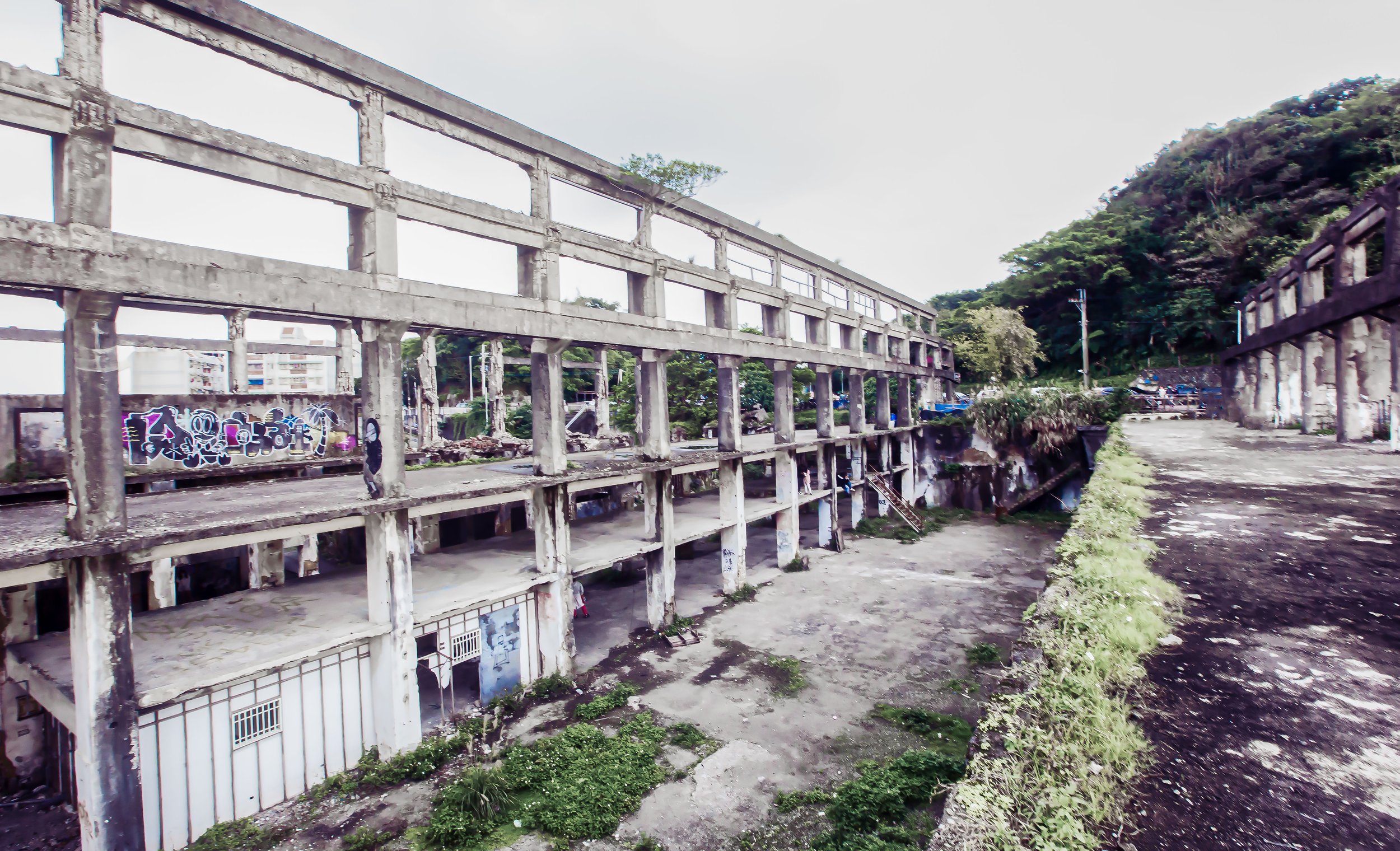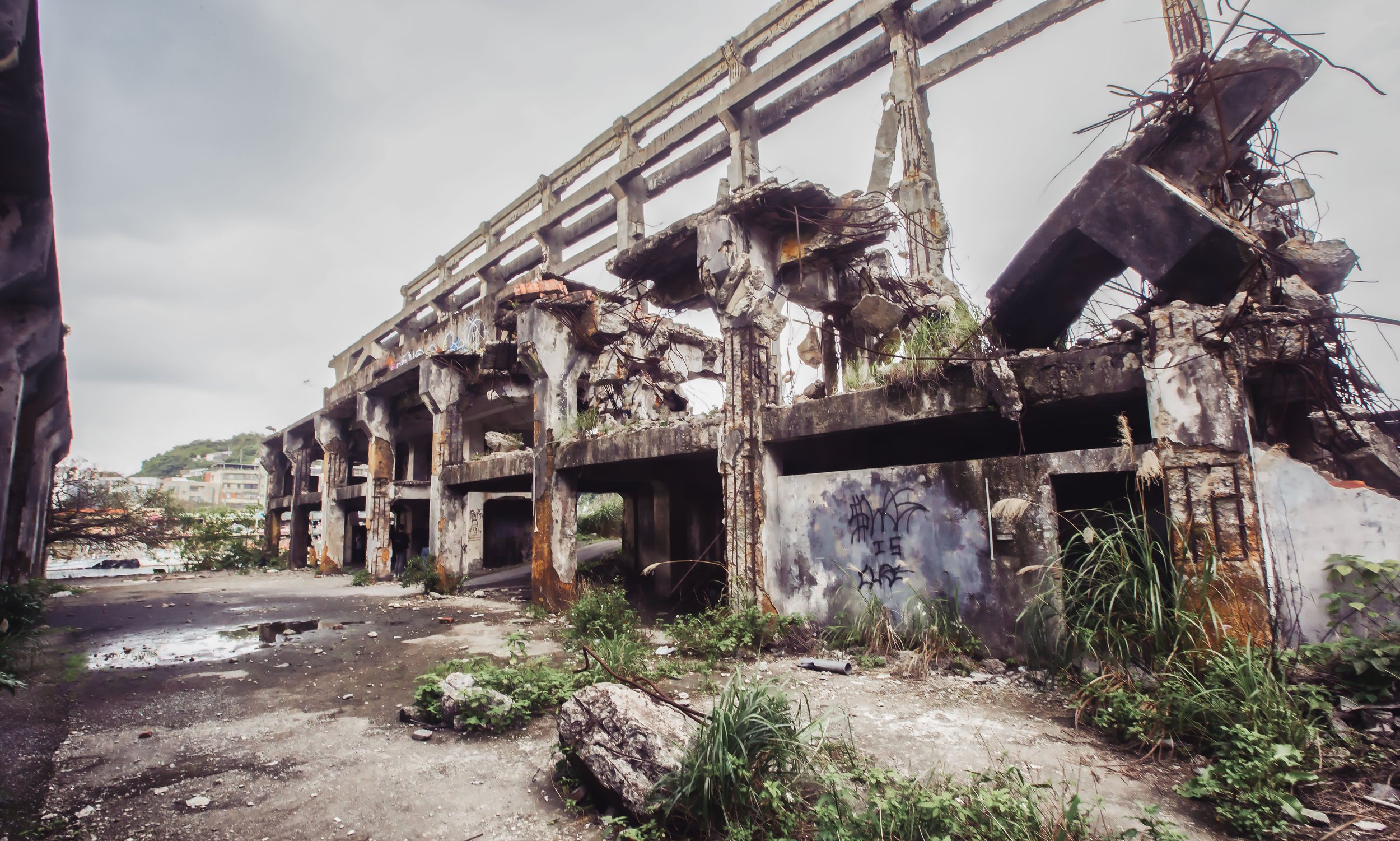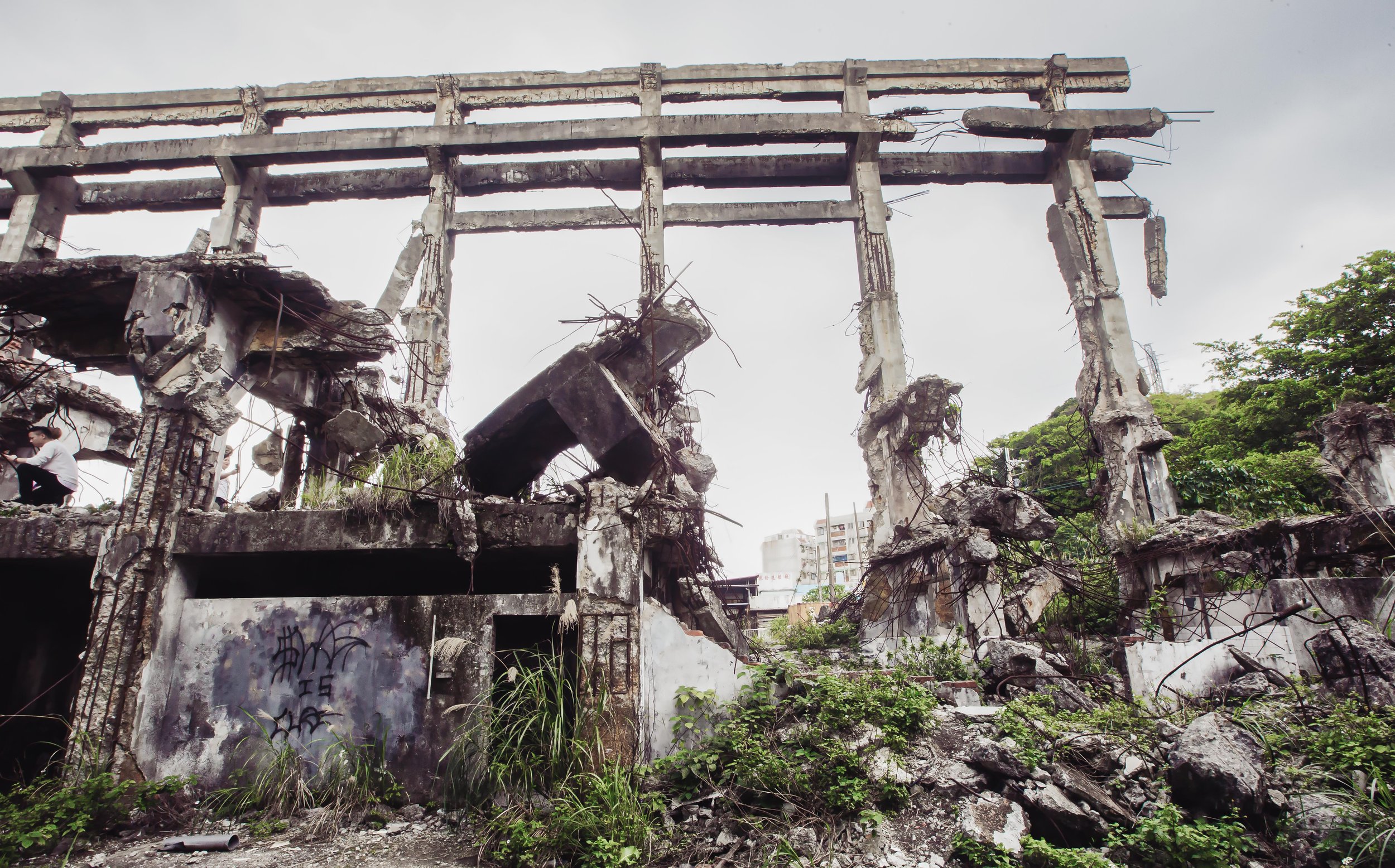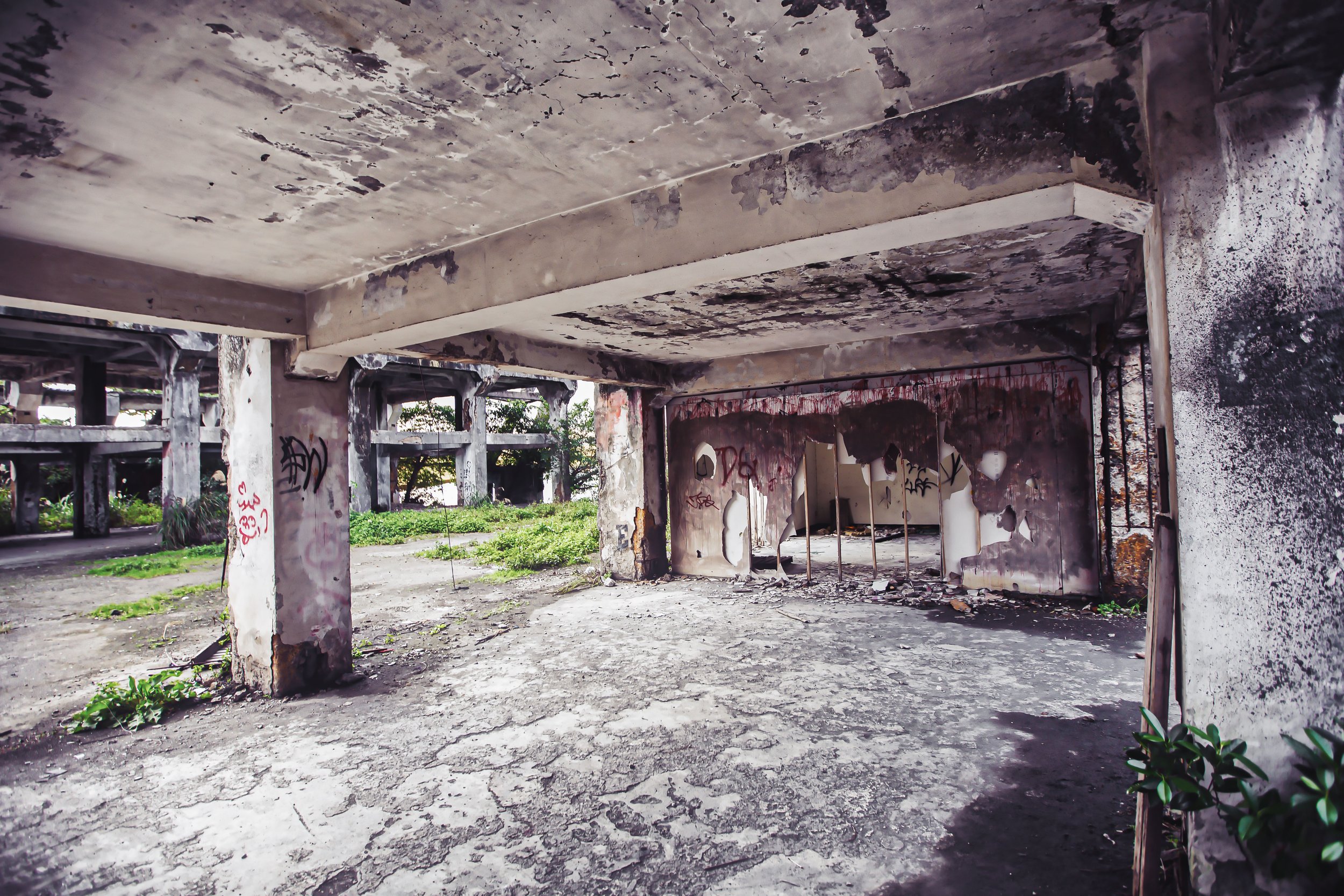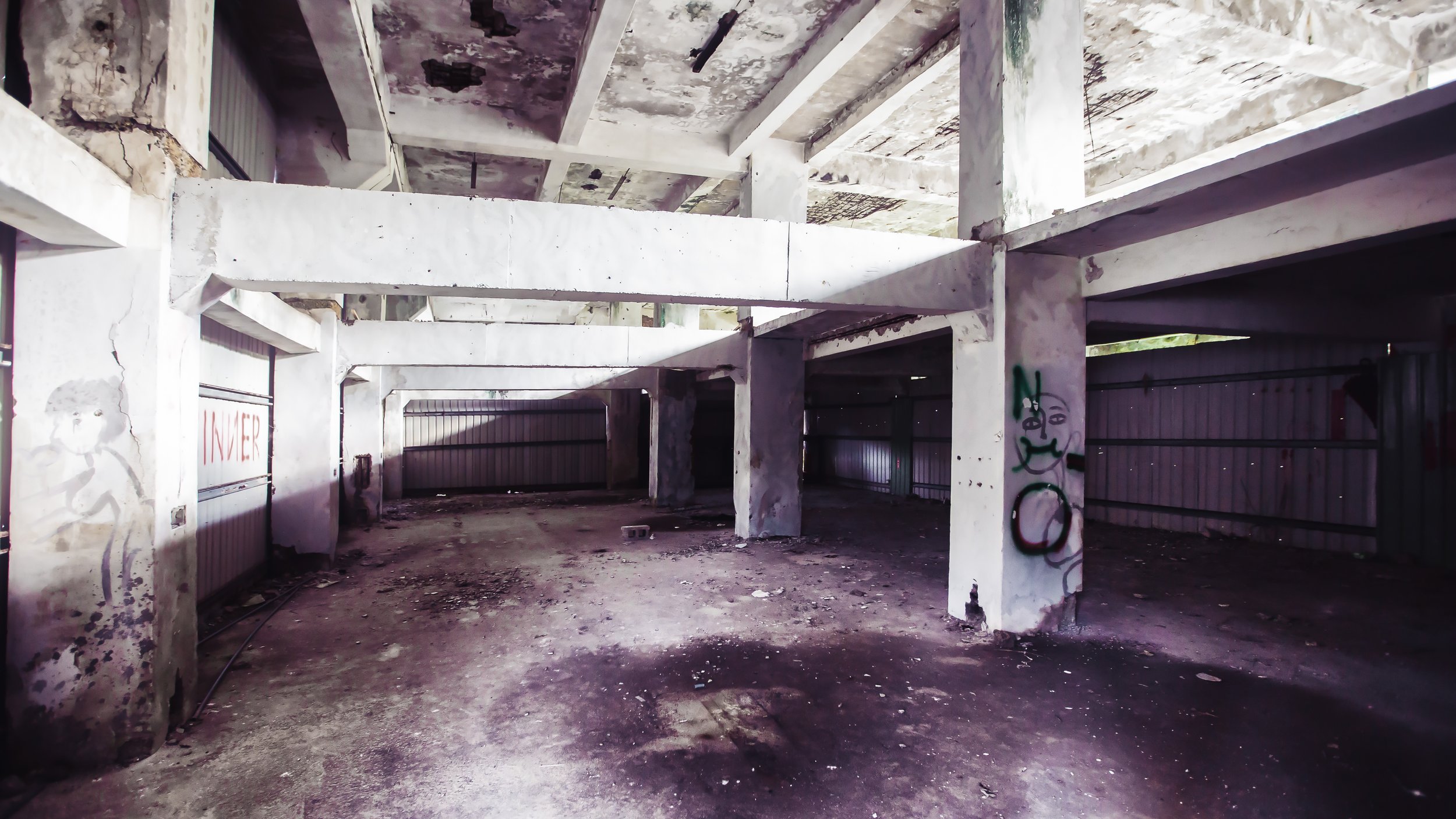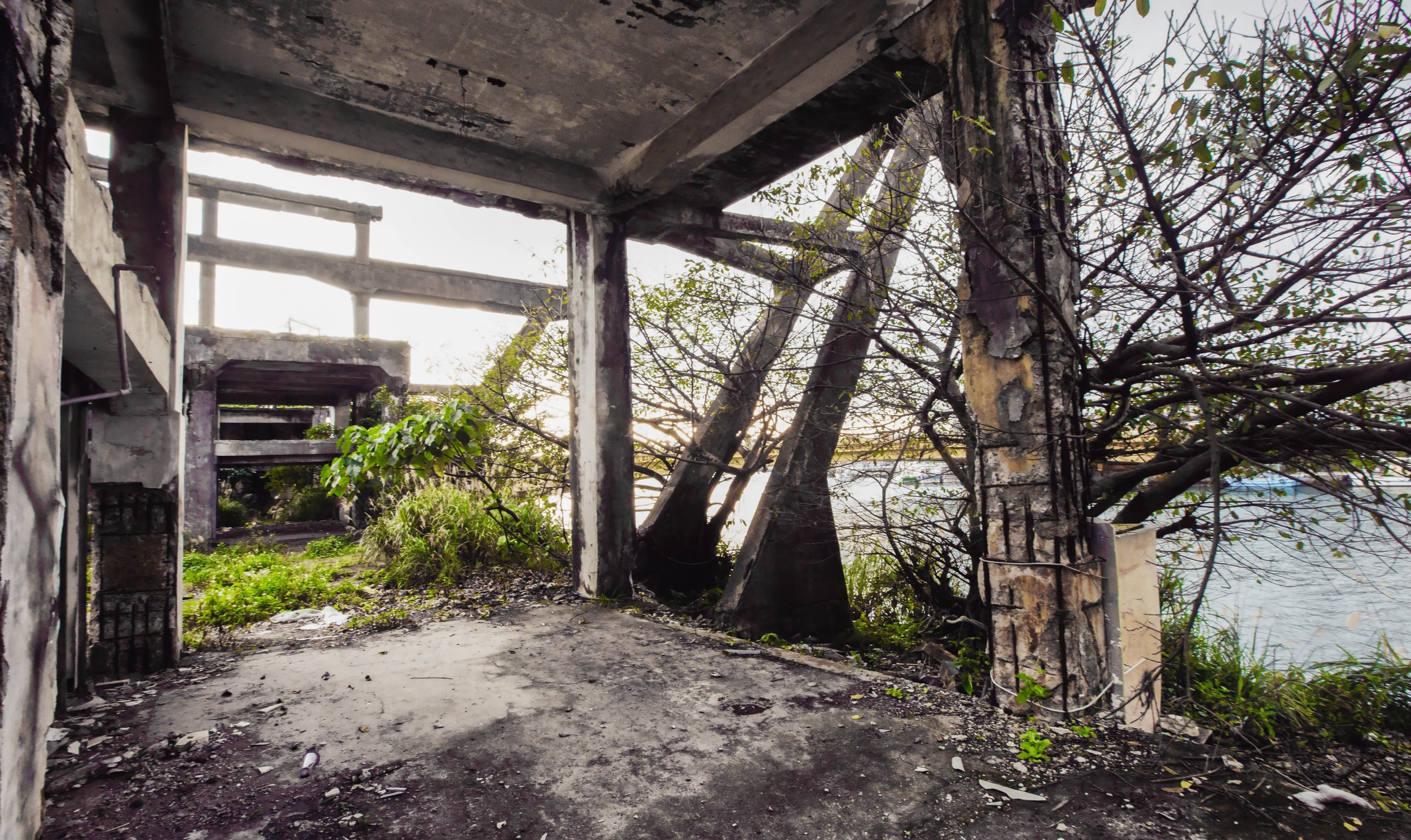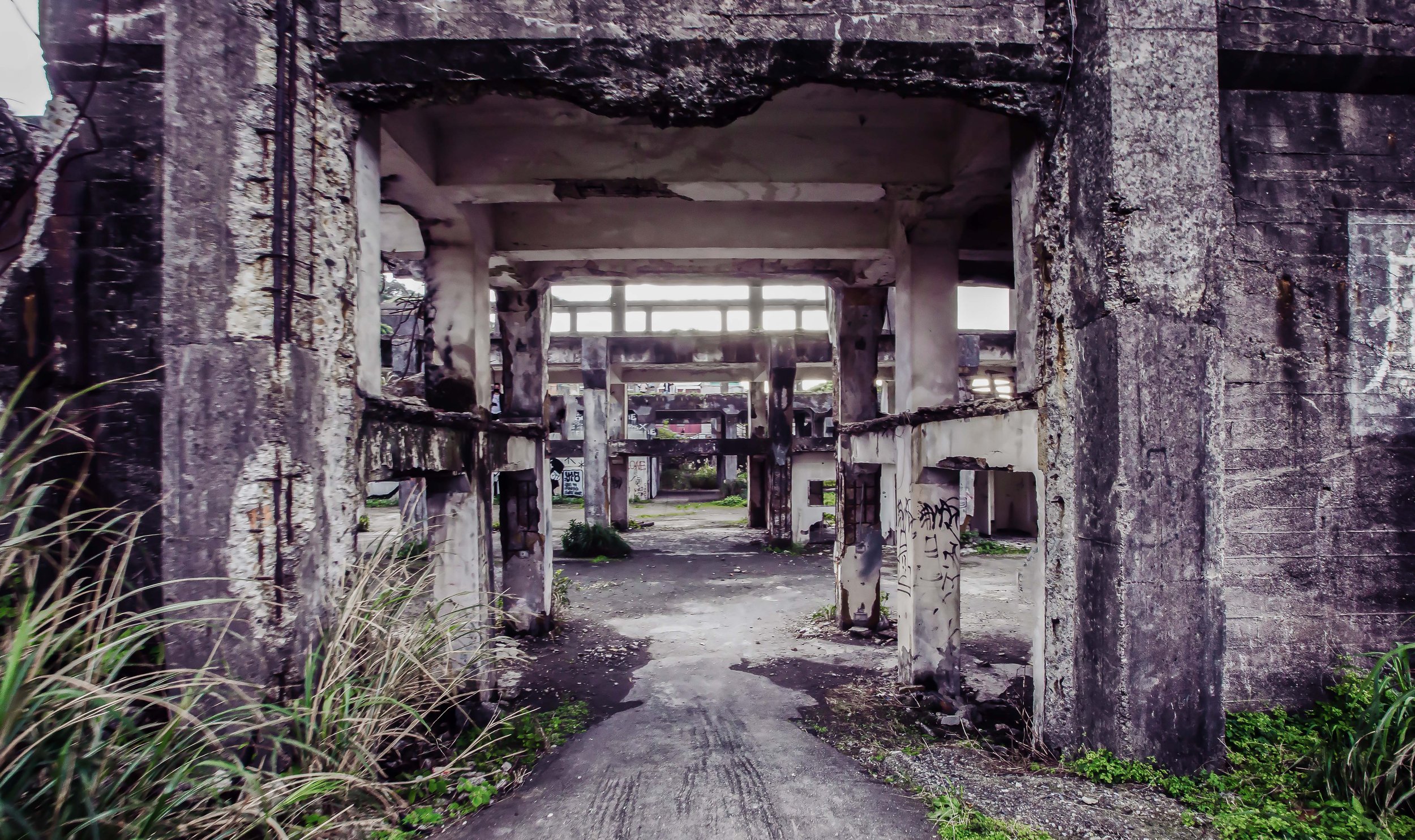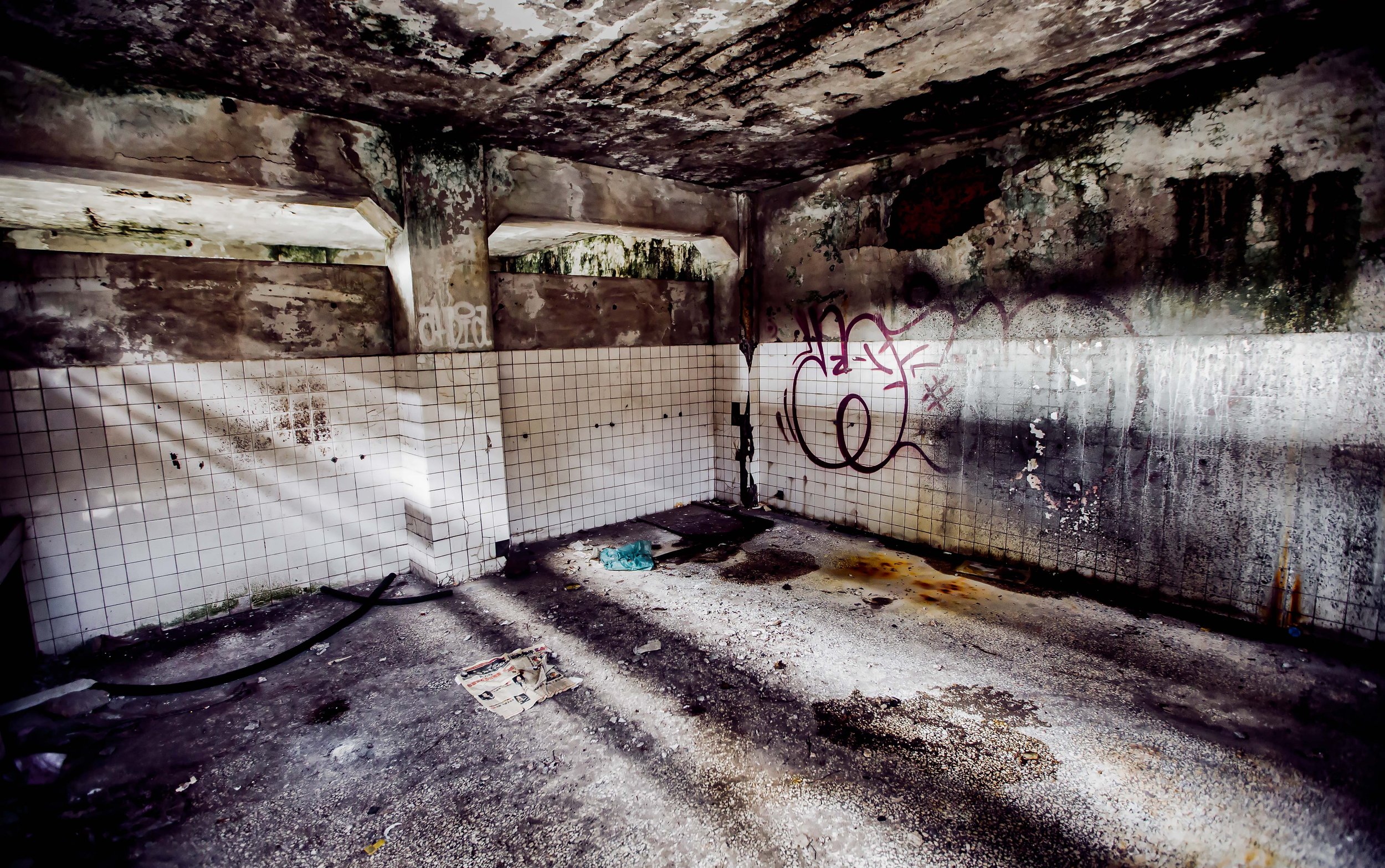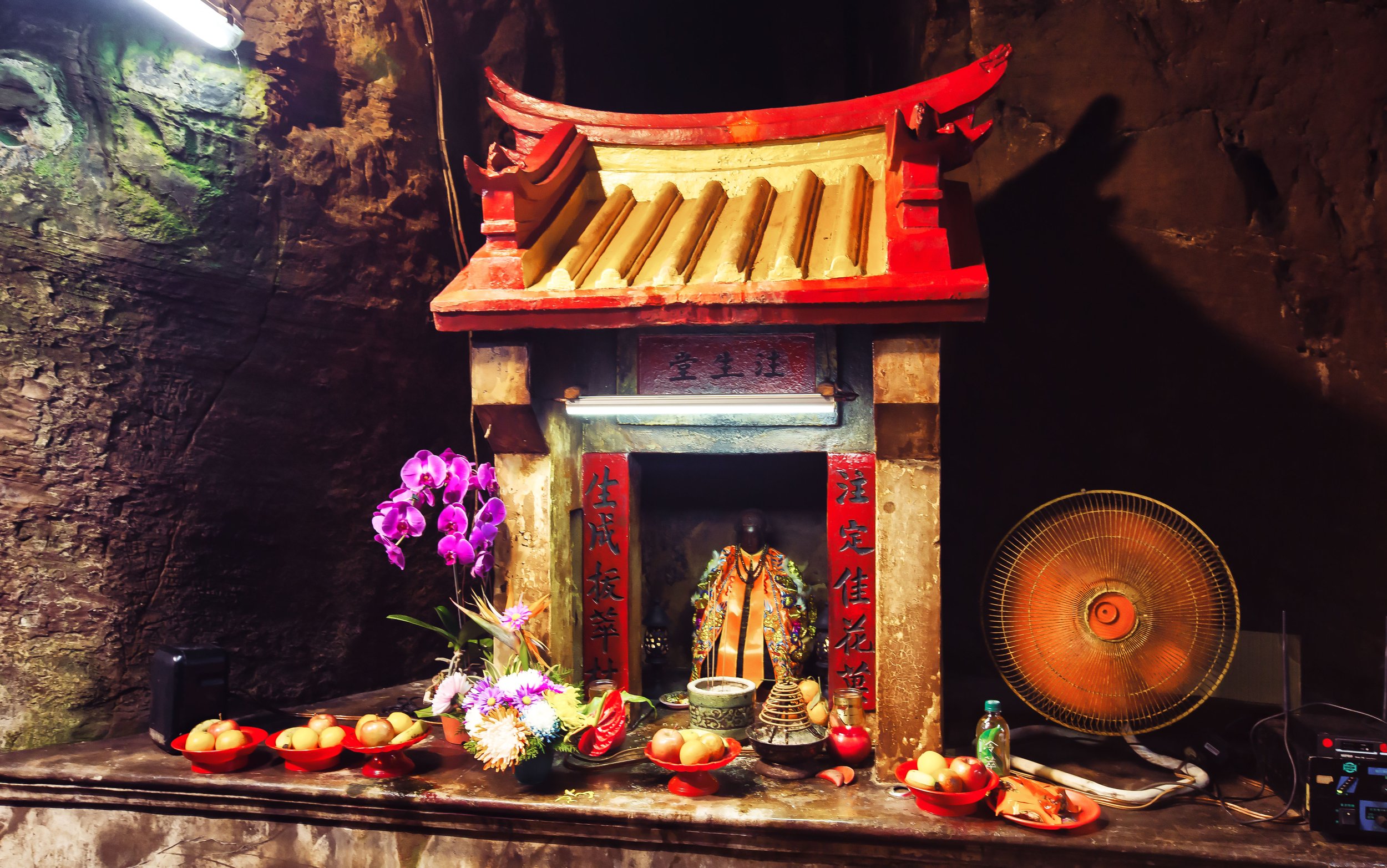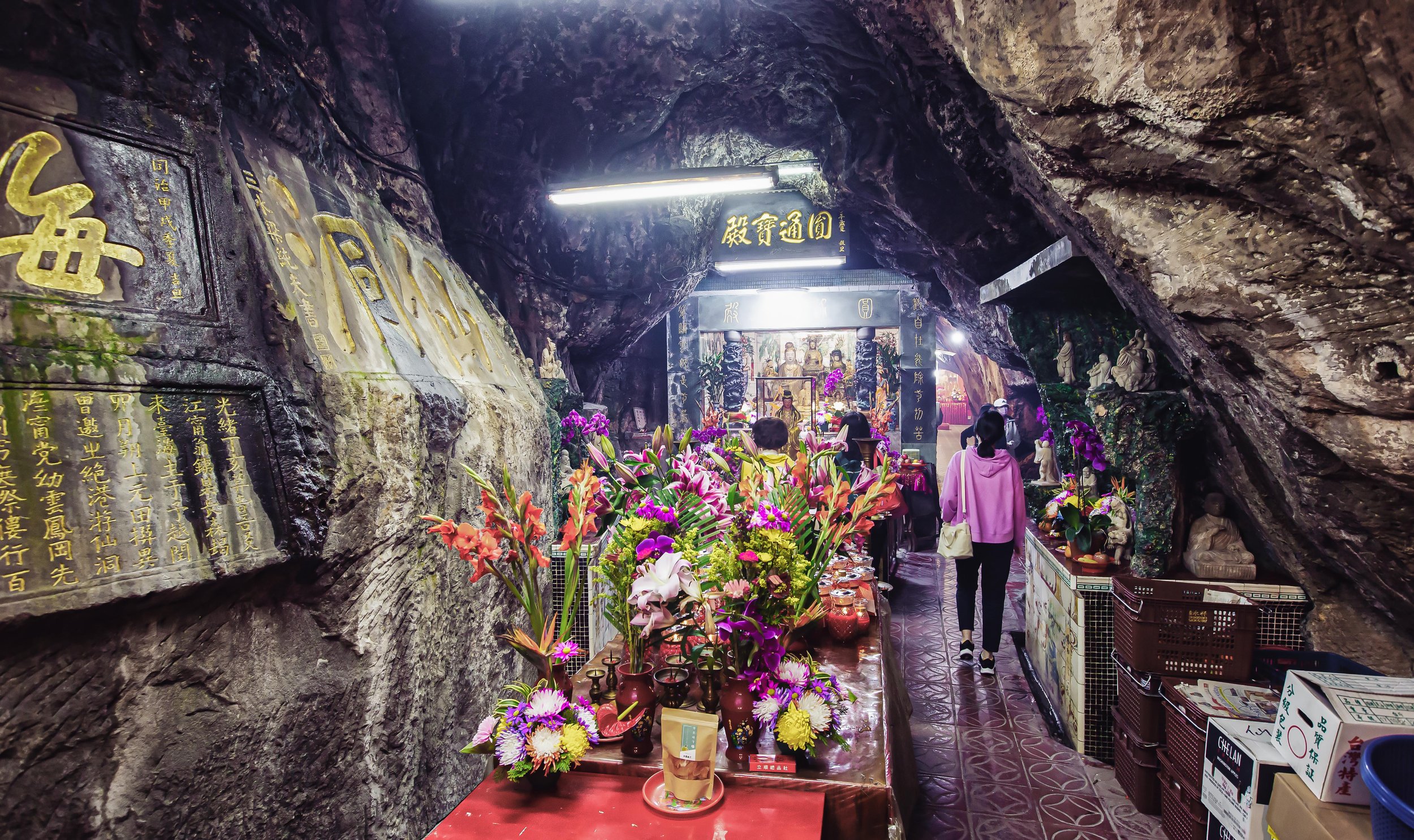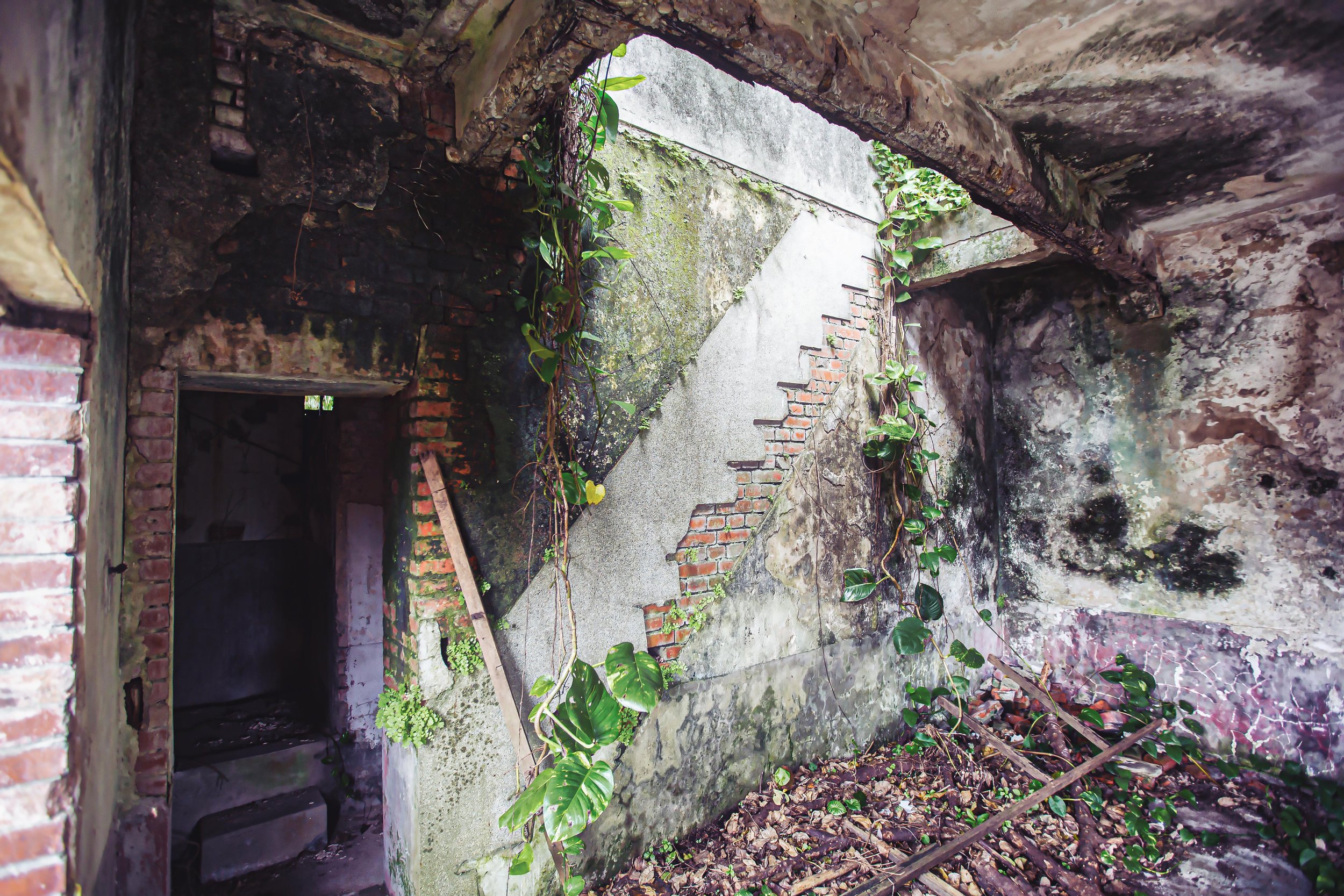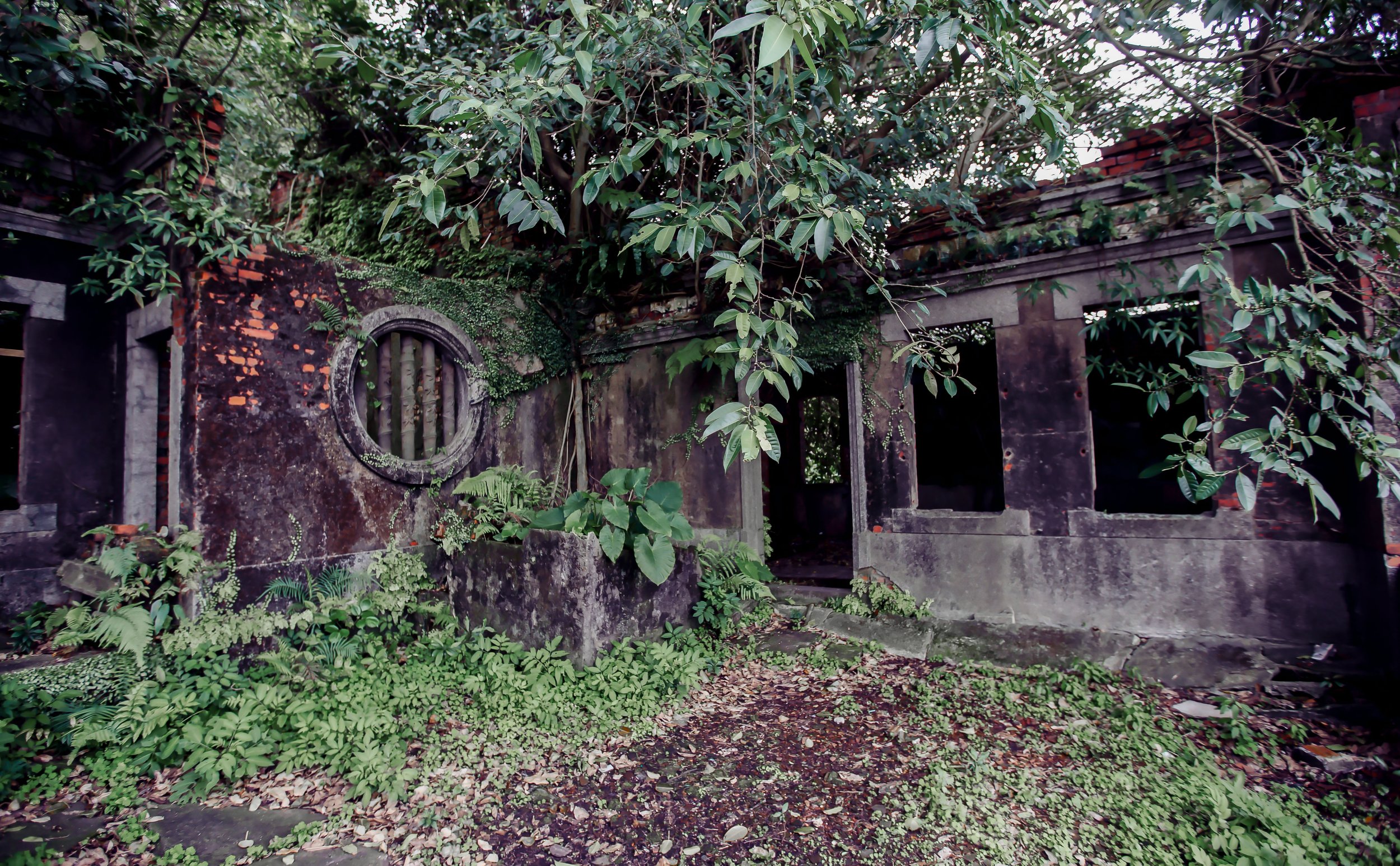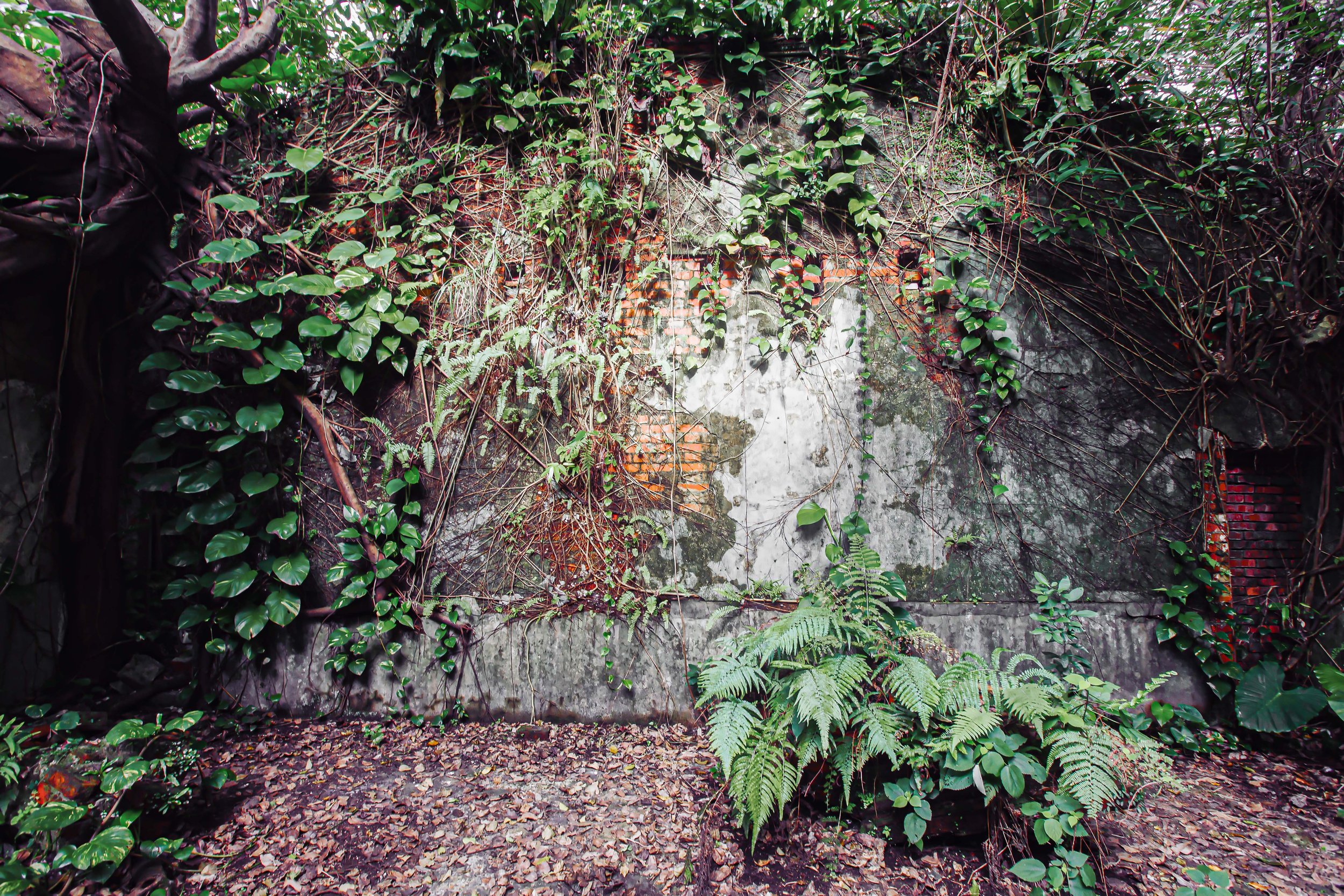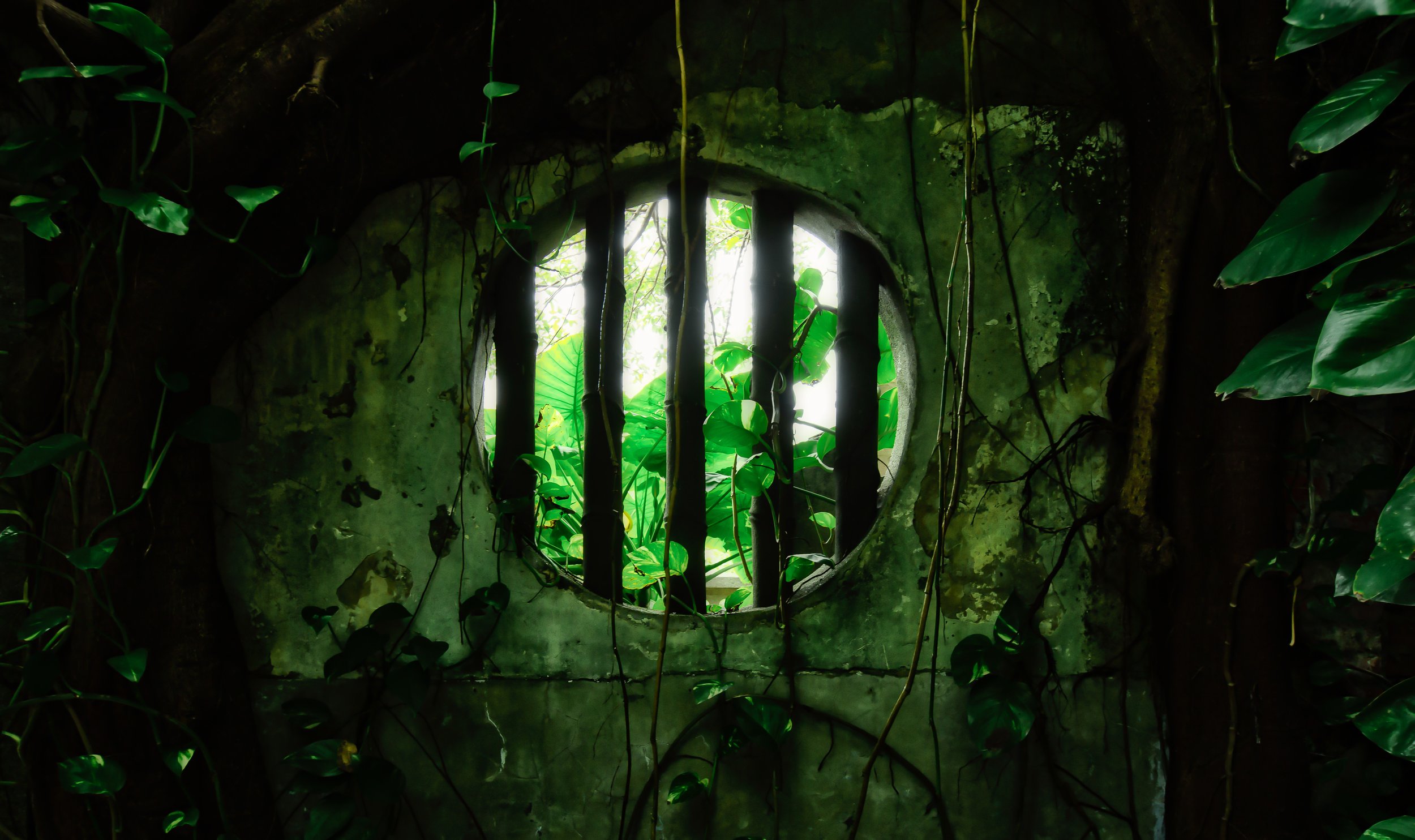Today, I’m going to introduce a historic shipyard in northern Taiwan that has been abandoned for quite some time - and was for quite a while been a favorite for local urbex photographers.
In recent years, this ‘secret’ location (which has been hiding in plain sight) came to the attention of the world at large, and has arguably become the most popular abandoned site in the entire country. It’s transformation from an obscure property into an overnight social media sensation however has been interesting to watch while it has also become somewhat of a contentious issue for the local government, given that there are some serious safety concerns involved.
It’s safe to say that a number of factors contributed to turning this ruin into a social media sensation, but what I find most interesting is that in a city that features a long list of beautiful tourist attractions - this dilapidated structure has the ability to attract a wide range of visitors ranging from local Instagram celebrities to tour buses full of senior citizens.
It has also helped to promote the Urban Exploration hobby, with a growing community of local explorers, who have started out here and gone on to discover some very photogenic ruins across the country!
Nevertheless, with the shipyard’s newfound popularity as a tourist attraction, you’d think that there would be a multitude of resources available with information about its historical significance, yet even though you can find numerous Chinese-language articles about it, few of them feature little more than basic facts.
While I’d like to help alleviate that problem with this article, I first have to give some major props to my friend and fellow blogger, Alexander Synaptic, who was one of the first people (in any language) to write extensively about the shipyard with an article (linked below) that I strongly recommend you take some time to read.
I highly doubt that my attempt could ever be as good as his article, but I’ll do my best!
Link: Agenna Shipyard 阿根納造船廠 (Spectral Codex)
Below, I’ll provide an introduction to the history of the shipyard, and its current predicament and conclude by providing some info about getting to the area, which is something I rarely do when it comes to my urbex-related posts. Although, I’m not really sure if this one can really be considered urban exploration anymore.
Feel free to debate that one amongst yourselves!
The Agenna Shipyard Ruins (阿根納造船廠遺址)
Located within Keelung’s Zhengbin Fishery Harbor (正濱漁港), just next to the bridge that crosses the Bachimen Channel (八尺門海峽) to Peace Island (和平島), the Agenna Shipyard was constructed on a historically significant plot of land that dates back as far as the Qing Dynasty.
Predating the shipyard by almost a century, the development of the shoreline along the channel is somewhat unclear, but archaeological evidence suggests that industrial activity started in the area decades prior to the arrival of the Japanese in Taiwan in the late 1800s.
Looking at maps of the area from the 1920s however, we can see that a branch railway was constructed to transport coal from nearby mines to the first iteration of a port, which shipped the coal back to Japan.
As the amount of shipping traffic increased at the primary port of Keelung, the colonial government planned to have the commercial and fishery industries split between two ports with the “inner" port of Keelung servicing commercial traffic, and a newly re-developed “outer” port area near (what was then known as) the ‘Hasshaku-mon Channel’ becoming the newly established 'Keelung Fishery Port’ (基隆漁港 / きいるんきーるん) in 1935, which at the time was Taiwan’s largest fishery port having enough space to dock four hundred boats in addition to processing facilities and a market along the shoreline.
Note: Today, several of the larger buildings constructed during in the 1930s for the fishery port are in the process of being restored and re-opened to the public as tourist attractions, making this area of the city an attractive one that will provide an excellent experience for tourists.
While construction on the fishery port was taking place, the Nippon Mining Company (日本礦業株式會社) was simultaneously in the process of constructing a twelve kilometer-long branch railway, which became known as the ‘Kinkaseki Branch Line’ (金瓜石線 / きんかせきせん). The narrow-gauge line stretched from Suinando Station (水湳洞駅 / すいなんどうえき) to Hasshaku-mon Station (八尺門駅 / はしゃくもんえき), running along the northern shoreline transporting gold and copper ore to the harbor, where it was loaded onto barges to be sent across the harbor and then back to Japan.
The significance of the branch railway, especially with regard to this article, is essentially because Hasshaku-mon Station was strategically located next to where the shipyard would eventually constructed. During the Japanese-era, the land was used as an ore dock, creating the first iteration of a dock in this location.
Interestingly, the Japanese authorities had some lofty development plans for the area, especially with regard to Sharyo-to (社寮島 / しゃりょうとう), the island we know today as Peace Island (和平島), with maps from the 1930s showing how the area would have been developed. Coincidentally, the island we know today was originally a collection of three islands, Sharyō-to (社寮島), Nakayamako-tō (中山子島), Okeban-sho (桶盤嶼).
If you look at the historic map provided above, you can see the red lines that indicate planned development, which would have artificially connected two of the islands. In the decades since, it’s apparent that those plans carried over with the new regime as it is currently a single island.
When the Japanese-era ended in 1945, and the Chinese Nationalists took control of Taiwan, the newly established regime sought to continue to capitalize on the island’s natural resources, with the assistance of the already established infrastructure. Yet just over a decade or two of Chinese Nationalist control, almost everything of value had already been taken from the ground and with the mines depleted, the branch railway became unnecessary with the section between Badouzi Station (八斗子車站) and Bachimen Station (八尺門車站) suspended.
With service on the branch railway officially coming to an end on August 26th, 1962 (民國52年), the ore dock and the space that Hasshaku-mon-turned-Bachimen Station occupied was suddenly freed up, and the Taiwan Metals Mining Company (臺灣金屬鑛業股份有限公司) lost interest in maintaining the property.
The solution to their problem came a few short years later when in 1966 (民國55年), Thomas Hsueh (薛國航), an US educated engineer and entrepreneur, leased the land and opened the ‘Argonaut Shipbuilding Company’ (阿根納造船廠). Specializing in the construction of luxury yachts, Hsueh made use of his network of business contacts in America, and Taiwan’s cheap and skilled labor to earn a fortune with the shipyard.
Working as a sub-contractor for the Florida-based Chris Craft Industries, the shipyard specialized in the construction of smaller pleasure-craft, and was able to quickly adapt to Chris Craft’s transition to constructing ships with fiberglass in the 1970s and 1980s.
Note: There is a bit of confusion with the naming of the site, so let me take a minute to explain: The name we currently use for the site, “Agenna Shipyard” is simply the romanization of the Chinese-language name. More specifically the pinyin is ‘ā gēn nà zào chuán chǎng’ (阿根納造船廠). Does that name have any meaning in Chinese? No, not really. The name was actually a direct transliteration of the English word “Argonaut” into Chinese. The Taiwanese-American owner of the business essentially required an official Chinese-language name to register the company here in Taiwan, as well as an English name to register the company in the USA. This is a common business practice for multi-national corporations in Taiwan.
Working primarily with Chris-Craft since its inception, the shipyard constructed several of the company’s flagship yachts for a number of years. Unfortunately, the fate of the Argonaut Corporation, and the shipyard were tied too close to that of Chris-Craft back in the USA. So, when economic recession hit the US in the late 1970s and global sales declined, that company was forced to restructure, with its assets and trademarks sold to another investment group in 1981.
Link: Chris-Craft Corporation (Wiki)
Faced with a loss of its most important partner, and coupled with a worldwide economic downturn, the Argonaut Corporation was left frantically searching for new partners. Ultimately, the company’s poor management structure served as the final nail in its coffin, and after a couple of years of inactivity it closed its doors completely in 1987 (民國76年).
With the end of Argonaut’s business operations, the land once again became a burden to the Taiwan Metals Mining Company, which had also fallen on hard times and was going through bankruptcy in the late 1980s. With most of that company’s assets sold off to pay off their creditors, what little remained of the company was merged with the prosperous Taiwan Sugar Corporation (台灣糖業公司), the current owner of the property.
In the four decades since, the land has been leased to a number of businesses, each of which didn’t end up last very long. Then, in 2008 (民國97年), the land was put on a 20 year lease to a local industrial company (阿諾瑪實業公司), which made national headlines when they did what many other corporations around the country had done in the past, and rolled up onto the property with a bunch of construction equipment and started an illegal demolition of the shipyard.
Link: Agenna Shipyard demolished for safety, firm says (Taipei Times)
The sudden demolition of the historic property was widely condemned, with the mayor of Keelung threatening hefty fines for failing to secure construction permits. The Keelung City Council likewise moved quickly to have the site granted heritage status under the Cultural Heritage Preservation Act (文化資產之保存), which was passed by the Taiwanese legislature that same year.
Unfortunately, by the time demolition was halted, considerable damage had been done to the shipyard, which is one of the reasons why the site is considered to be unstable and unsafe for the amount of people visiting on any given weekend.
The future of the historic shipyard remains unclear with the Keelung City Government hoping to eventually have it restored, but given that the land remains is the property of the Taiwan Sugar Corporation, there are a number of legal matters to be resolved before anything can be done. The shipyard has lingered in its current condition for a number of years and is essentially one or two large earthquakes from falling over on its own.
As I mentioned earlier, there were a number of factors that contributed to the shipyard becoming Taiwan’s most widely-visited and most popular abandoned ruin. One of those factors was the widespread media attention (and condemnation) that came as a result of the short-lived demolition of the ruins. What was probably the number one factor in bringing the shipyard to the attention of the public at large was when Captain America himself, Chris Evans filmed a trailer for one of the Call of Duty games on-site in 2014.
All it took after that were some clever Instagram posts to help the ruin achieve overnight popularity.
Link: Actor Chris Evans spotted in Taiwan filming commercial at Keelung Shipyard (ICRT)
To conclude, it’s important to remind readers that a visit to the area doesn’t have to be just to see the abandoned shipyard - While there you can also enjoy the view of the equally Insta-famous rainbow colored buildings at Zhengbin Harbor (正濱港口彩色屋). You could also visit the historic Sheliao East Fort (社寮東砲台), Peace Island Coastal Park (和平島海角樂園), and many of the other tourist attractions within the downtown core of Keelung City. Don’t make a trip to the area just to visit the shipyard, make sure you enjoy some of the city’s other excellent tourist spots!
Getting There
Address: Lane #116 Zhengbin Road, Keelung City (基隆市中正區正濱路116巷)
GPS: 25.153660, 121.771810
Something I rarely do when I write about urbex-related ruins is provide an address or a location.
With this one, there isn’t much point in not sharing that info with you - The shipyard has become so popular that there is a spot marking its location on Google Maps, making it relatively easy to find on your own.
Located next to Keelung’s Zhengbin Harbor (正濱港口), just before you cross the bridge to Peace Island (和平島), the shipyard is a relatively easy one to reach, but is a bit of distance from the city’s railway station.
This means that if you don’t have access to a car or a scooter you’ll have to make use of public transportation. It’s important to note that the narrow road along the harbor is home not only to the shipyard, but also the popular Zhengbin Harbor Rainbow Buildings (正濱港口彩色屋), and acts as the entrance to the Peace Island Coastal Park (和平島海角樂園). The area can be quite busy on the weekends and during national holidays.
With that in mind, I’ll preface this by letting you know if you’re driving a car, you’re likely going to have some trouble finding parking near the harbor - The very narrow road that leads you to the harbor and across the bridge to Peace Island wasn’t ever set up with cars and buses full of tourists, so I’d highly recommend you find somewhere to park well before you arrive at the harbor.
Of course, it’s not impossible to find a spot when you arrive, so if you are traveling to the area and are feeling brave, you can turn into the harbor, and then make another turn on Lane #116 where the shipyard is located and attempt to find a roadside parking space near the Keelung City Indigenous Cultural Hall (基隆市原住民文化會館), a short walk past the shipyard. Given that there are a number of buses that stop at the harbor, the traffic situation can be quite precarious meaning that if you turn in, you may find yourself stuck in a line of traffic that moves very slowly.
If on the other hand you’re in the area with a scooter, you shouldn’t have too much trouble finding a spot on the side of the road near the shipyard where you can park for a short time.
Now that we’ve gotten that out of the way, it’s time to talk about public transportation.
Once again, I’m going to preface this by saying that I love Keelung, it’s one of my favorite cities to visit in Taiwan - It is however a far cry from what most tourists would consider a convenient place to visit.
The traffic in the downtown core of the city is often congested, and unlike other major Taiwanese towns and cities, you (currently) don’t have access to YouBikes, GoShare, WeMo, etc.
If you have a drivers license, I highly recommend renting a scooter for the day near the train station. If not, you’ll be stuck relying on public transportation, which isn’t very efficient or reliable.
Below, you’ll find a list of bus routes that’ll get you to Zhengbin Harbor. I’ll provide links to each of the buses so that you can click on them to find their route map and schedules:
Zhengbin Harbor Heping Bridge Bus Stop (和平橋頭站)
Located next to the harbor, you’ll simply get off the bus at the station before crossing the bridge to Peace Island and walk up Lane #116 to find the shipyard.
Keelung Bus #101 (Peace Island 和平島)
Keelung Bus #102 (Peace Island 和平島)
Keelung Bus #109 (Tianxian Temple 天顯宮)
Keelung Bus #205 (Peace Island 中信 - 和平島)
Zhongzheng - Zhengbin Intersection Bus Stop (中正路正濱路口站)
Located along an important road between Keelung and Badouzi, getting off at this stop requires you to walk into the harbor area and then up Lane #116 to the shipyard. The distance between this bus stop and the one above is only about a two minute walk, but not all buses turn into the harbor area.
I can’t personally vouch as to whether or not you’ll be able to enter the former shipyard and explore the ruins as they’ve started preventing people from visiting. Whether or not this is constantly enforced, I’m not particularly sure. Still, you need to keep in mind that a visit to the shipyard might result in disappointment.
You can still view it from afar, but descending the old stairs to the old workshop area might not be an option.
If that’s the case, don’t worry too much. While in the area you’ll also be able to enjoy the beauty of the harbor as well as crossing the bridge over to Peace Island, which is pretty cool place to visit.
As a historic structure, it would be nice to see the local government do something to fix the area up in order to keep the ruins available for the foreseeable future. That being said the structure would likely require quite a bit of public funds to clean up. Currently, its existence and popularity are an accident waiting to happen and an insurance nightmare for the city, so if its closed when you arrive, don’t be too surprised.
There are an incredible number of abandoned structures throughout Taiwan, so if this kind of thing interests you, I suggest you start exploring and finding things on your own! It’s actually surprisingly easy to find some really cool places to visit. Stay safe if you do, and most importantly remember to keep these places to yourself, otherwise they might end up like the shipyard.
To conclude, I’m going to doing something I rarely ever do, show a picture of myself striking a pose at the ruin.
References
阿根納造船廠遺構 (Wiki)
阿根納造船廠 | 基隆絕美廢墟遺址,必拍基隆秘境 (好好玩台灣)
阿根納造船廠遺址‧廢墟遺址點燈的新風貌 (旅行圖中)
阿根納造船廠的歷史風華 (國家檔案)
廢墟也很美 阿根納的故事要從1919年說起 (UDN)
八尺門地標「阿根納造船廠」:見證基隆礦業、鐵道運輸與遊艇製造興衰史 (News Lens)
基隆-八尺門 礦砂裝船工廠 阿根納造船廠 (Just a Balcony)
Agenna Shipyard 阿根納造船廠 (Spectral Codex)


